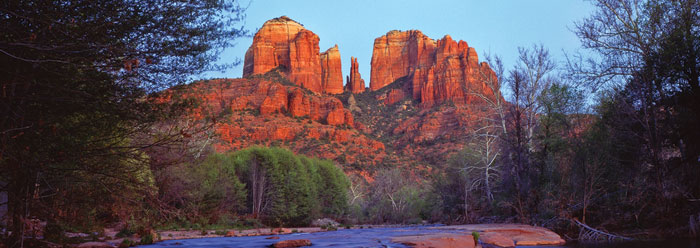Basic research sponsored by the Institute for Creation Research and funded by its research division, the National Creation Science Foundation, continues to investigate subjects crucial to the creation/evolution question. Many of the currently funded projects are in the field of geology under the umbrella research initiative FAST (Flood Activated Sedimentation and Tectonics), directed by ICR's Dr. Steve Austin. One of the most interesting projects is an investigation of the enigmatic Coconino Sandstone of Grand Canyon.
Standard thinking cites the Coconino Sandstone as perhaps the most difficult formation to reconcile within the Flood model of earth history. The conventional view is that the Coconino Sandstone represents ancient wind-blown desert sand dunes, which would have been impossible to form during the global Flood.
Aggressive teaching by uniformitarians has often intimidated scientifically-minded Christians into abandoning biblical history. The goal of this multi-year research project is to investigate the nature and character of the Coconino Sandstone and discover if its depositional history can be better interpreted within the context of the great Flood of Noah's day. The lead investigator is ICR graduate Dr. John Whitmore, now a professor of geology at Cedarville University.
The Coconino covers much of northern Arizona, and along with correlating beds extends into other states, in all totaling at least 520,000 square kilometers.1 It is dated by evolutionists as within the Permian system, some 250 million years old. Similar Permian sandstones occur worldwide, suggesting that something unique and global was happening at this stage of the Flood and that discoveries made in the Coconino may be applicable in these other units as well.
In most places, the Coconino is composed of large, steeply dipping cross-beds. Are these solidified wind-blown sand dunes or underwater sand hills? Surprisingly, the standard desert interpretation was made decades ago2 and has seldom been revisited by geologists, yet the evidence seems to favor the underwater interpretation.3
According to Whitmore's reports, the deposit interfingers with other formations of unquestionable marine origin, implying that the Coconino is also marine. It bears fossil trackways and burrows best understood as being related to underwater activity, not to a dry, sand dune environment. Its sand grains are poorly sorted and somewhat angular, not at all like desert sands with well-sorted and rounded grains. We suspect the research will demonstrate that the sand dune interpretation can be confidently rejected in favor of a better supported sub-aqueous interpretation.
Careful field investigation is the key to this important project, both of the Coconino and modern sand dune fields for comparison, and Whitmore and colleagues are relentless. Samples gathered are examined microscopically to shed light on the mechanism and mode of deposition, while minerals, fossils, and fossil traces will help determine the environment of deposition. Please pray for the success of the study and the safety of the researchers as they attempt this sometimes hazardous work.
Evolutionary and uniformitarian interpretations of the Coconino have for too long been a stumbling block for Christian students and a roadblock to non-Christians. Answering this lingering question is finally within our grasp.
Reference
- Snelling, A. A. 2009. Earth's Catastrophic Past. Dallas, TX: Institute for Creation Research, 509.
- McKee, E. D. 1934. The Coconino sandstone--Its History and Origin. Papers Concerning the Palaeontology of California, Arizona, and Idaho, Carnegie Institution, Washington D.C., Publication No. 440, 77-115.
- Austin, S. A. (ed.). 1994. Grand Canyon: Monument to Catastrophe. Santee, CA: Institute for Creation Research, 32-35.
* Dr. Morris is President of the Institute for Creation Research.
Cite this article: Morris, J. 2010. The Coconino Sandstone: A Flood or a Desert? Acts & Facts. 39 (7): 15.






















